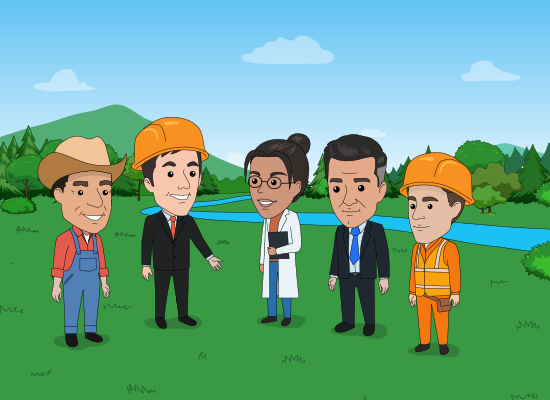Here’s what’s missing from the picture.
Remember when President Trump and team talked regularly about “Infrastructure Week?” Alas, it never came to pass. Instead, the notion became a running gag. Too bad. It was one of Trump’s better ideas.
Fast forward to today, and it looks like infrastructure’s moment has finally arrived. Spurred by President Biden’s big proposal, Democrats and Republicans have even engaged in a somewhat substantive debate about what constitutes proper infrastructure. Further, a big infrastructure bill will likely pass soon. This is real progress.
But one thing is mostly missing from the conversation.
Nature.
As our readers know, green infrastructure (aka “natural capital”) presents a hugely attractive win-win-win-win investment opportunity. We’ve been waiting a long time for this moment. But we need to do much more right now to take full advantage of this opportunity.
Let’s rev up assertive and collaborative campaigning for green infrastructure. Private sector players, NGOs, philanthropists, and scientists should speak out. This is the very best opportunity we’ve had in a very long time to champion natural capital.
There is reason for some optimism. The concept of green infrastructure is now well understood. And a number of new and exciting private sector efforts are underway to pursue business opportunities connected to natural capital.
But infrastructure investing is mostly the job of the government. Unless we push public officials very hard now, a green infrastructure boom is not likely.
Disclosure: I’m an enthusiast about investing in nature. It was a main focus for me over the 11 years I served as CEO of the Nature Conservancy. I wrote a book on the topic. And today I advise and invest in a number of companies in the nature-based solutions business.
Green Infrastructure 101
Most of us love nature for nature’s sake. We also respect other species and future generations. We don’t need any additional rationale to care for nature. We know it’s the right thing to do, period.
But let’s broaden our thinking for a moment.
We can also think of nature as an asset base that we should invest in and protect. Why? Because nature provides us critical services such as:
- clean air to breathe
- healthy water to drink
- good soil in which to grow our food
- coastal ecosystems that protect us from sea level rise and storms
- habitat for biodiversity
- beautiful outdoor areas for recreation
- and—if we don’t blow it—a stable climate in which to live.
We also know that this natural capital base is severely degraded. Nature urgently needs our help right now or we risk losing these key services forever.
This investment rationale for nature is useful because it helps mobilize additional resources, including people, dollars, political clout, and enthusiasm to the cause. We can use this extra help.
But when governments plan big infrastructure programs, they still mostly think about “grey” (i.e., man-made) assets, such as bridges and seawalls.
It’s our job to get green alternatives on the table, like greening rooftops, restoring forests, and conserving ecosystems that strengthen watersheds or provide us protection from storms.
For the skeptics among us: why is green infrastructure win-win-win-win?
I can think of no better example than New York City’s famous investment in nature in the late 1990s.
By 1989, a combination of increased pollution and stricter EPA rules left NYC facing the prospect of building new facilities to clean its drinking water . . . to the tune of $8 billion — a cost that would ultimately be borne by local residents and business. But thanks to some courageous and bold thinking by city officials, regulators, farmers, and landowners, a much better alternative was funded. Rather than paying to clean up dirty water once it made its way into the city, these leaders chose to protect the upstream watershed from where the water came. The price tag was still in the billions, but far below the figure 8 that was originally before them.
This was truly a win-win-win-win. At no extra charge, the city secured:
- beautiful open spaces
- good jobs
- habitat for wildlife
- good farming conditions
- beautiful areas for outdoor recreation
- and even some carbon sequestration (although climate wasn’t intentionally part of the game plan at the time).
So instead of building a huge piece of grey infrastructure to clean up a human-made mess, the city instead invested in nature to keep clean and delicious water clean and delicious and attained all these additional benefits. It makes sense, doesn’t it? You can read more about the details here. It truly is an amazing story. And it’s a model for future investment.
Are there other great examples of green infrastructure?
Yes, plenty! How about:
- Insurance for coral reefs to provide protection from storms
- Water sensitive urban design to manage excess water
- Regenerative agriculture to reduce nutrient runoff, store water, and drawdown carbon
- Parks adjacent to hospitals to materially improve patient recoveries
- Protected areas to serve biodiversity goals
- Bees for pollination to boost agriculture
- Trees in cities to absorb pollution to improve human health outcomes
Just to name a few.
